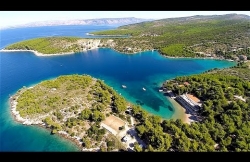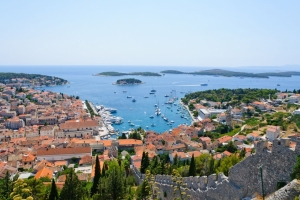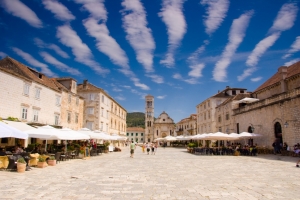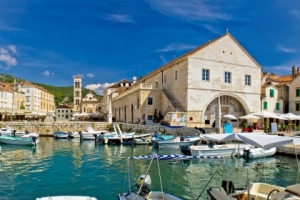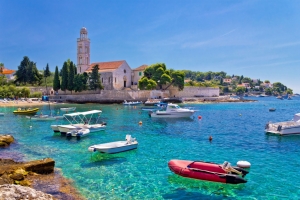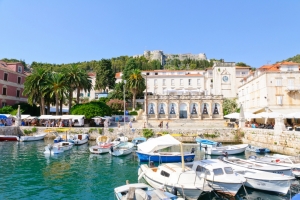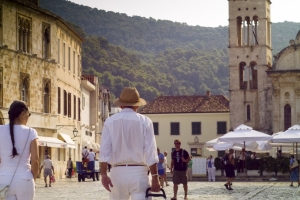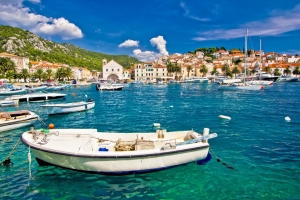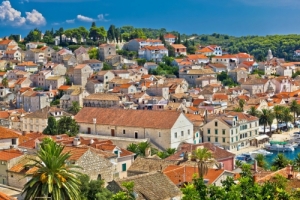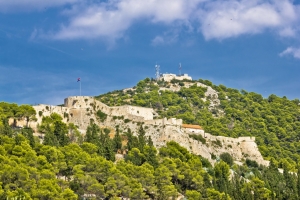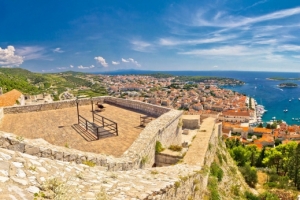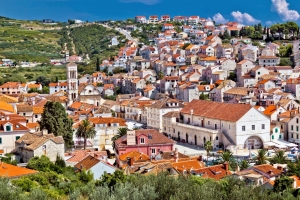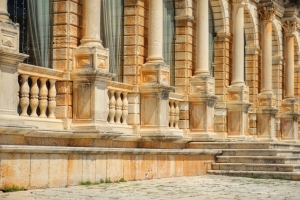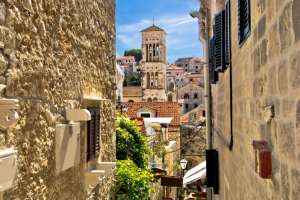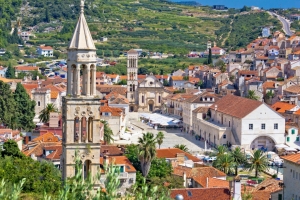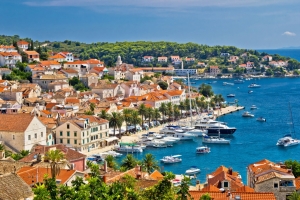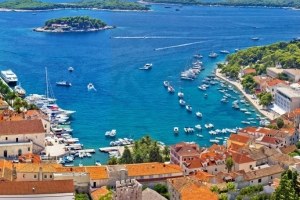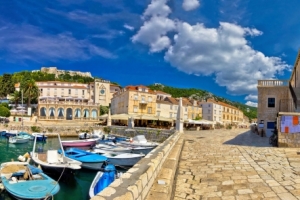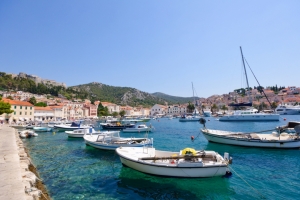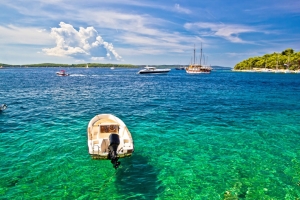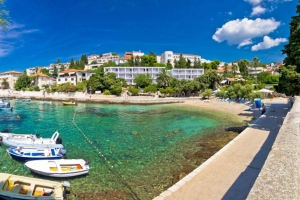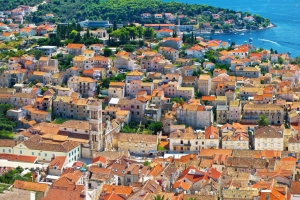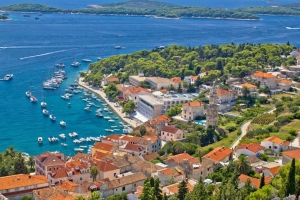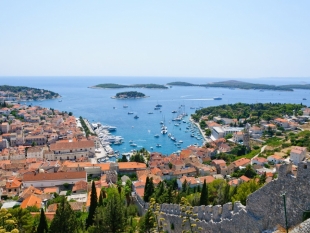


In the port city of Hvar, the main resort town on its namesake island in central Dalmatia. There are about 4,300 residents. Hvar Town is in an idyllic bay on the southern coast near the western end of the island and is surrounded by karst hills. Hvar town's present urban area was settled in the 1st millennium BC by the Illyrians, by the Greeks in the 4th century BC and by the Romans from the 2nd to 4th centuries.
In this region throughout the year, there is usually a sunny and mild climate with temperatures around 12 degrees in the winter and an average of 29 degrees in summer. The population subsists, in addition to the income from tourism, from the cultivation of various herbs such as rosemary and lavender and cultivated plants such as vines and olive trees. From this area are also the well known grape varieties Plavac Mali and Zlatni Plavac. These grapes are famous even from far beyond the borders of the island- Hvar is where these best-loved wines are excellently produced.
As a visitor to the town of Hvar you can not only enjoy a lot of sun and the charm of an enchanting town with Mediterranean flair, but you also enjoy large, and sometimes exquisite, gastronomic choices and immerse yourself in the vibrant nightlife at the end of a relaxing day. In addition, the resort is very popular with nudists because, ever since the 1920s, the bay of Stipanska and the island of Jerolim have been reserved for naturalists.
Attractions in Hvar Town
Among the main attractions in Hvar is the Fortress Fortica (Spanjola) on the mountain north of the city. It was originally built for Illyrian defenses. Then it became, probably under Emperor Justinian, a late antique Byzantine fortification. The castle as it stands today, was built in the late 13th century by the Venetians. Other fortresses perched in Hvar, are called the Napoleon, Baterija and Veneranda (Venerable), and moreover, another fortification is also visible on the island of Galesnik.
In the city, it is best to begin the tour in the town square, the Pjaca. There is a fountain, a stone pillar, and an impressive loggia- built in the 15th century in the Renaissance style- to be seen on the north side. On the south side of the square, directly located at the pier, is the city theater with its arsenal which was built in 1579 and whose interior is decorated in an Italian style. The quay of the town was laid out in 1455 and is principally of marble. Another attraction is the Bishop's Gate , built by none other, the Bishop Nicholas in 1249. In addition, a must see are the Cathedral and the Franciscan monastery, both located in the center of Hvar. They are the most beautiful sacral buildings on the island.
Attractions around Hvar
A holiday on the island of Hvar has a lot to offer in terms of its numerous sightseeing tours to a number of places in the surrounding area. Here, for example, the upstream situated Hell Islands (pakleni) would be worth mentioning. They can be reached by water taxi or on a cruise boat. Awaiting visitors there are beautiful white beaches and heavenly bays. The island of Vis is also very nice for swimming and is only about 18 kilometers away from Hvar.
Another great day trip would be to go to Split, the second largest city in Croatia, whose old city center was declared a UNESCO World Heritage Site. Here there are tourist highlights justing waiting to be explored such as Diocletian's Palace with its underground network of passages and the impressive colonnaded (Peristyle), Sveti Duje Cathedral, including its bell tower and the chic Riva promenade in the port area.
closeBeaches

- 6-7
- out of 7
Location
Why Best of Croatia ?
- Best Price Guaranteed
- No booking fees
- Thousands of satisfied customers
- Numerous objects with direct-booking option
- Intelligent search function with numerous useful filter options
- Extensive travel guide with lots of pictures and videos over 500 pages
- Detailed beach guide with more than 700 beaches







 Best of Croatia
Best of Croatia










